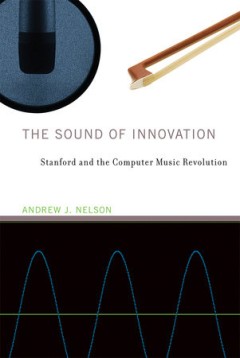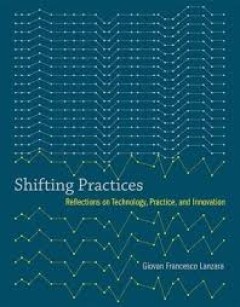Filter by

The Sound of Innovation: Stanford and the Computer Music Revolution
How a team of musicians, engineers, computer scientists, and psychologists developed computer music as an academic field and ushered in the era of digital music. In the 1960s, a team of Stanford musicians, engineers, computer scientists, and psychologists used computing in an entirely novel way: to produce and manipulate sound and create the sonic basis of new musical compositions. This grou…
- Edition
- Ed. 1
- ISBN/ISSN
- 9780262328814
- Collation
- -
- Series Title
- -
- Call Number
- 789 NEL s

Understanding the art of sound organization / the Art of Sound Organization
The first work to propose a comprehensive musicological framework to study sound-based music, a rapidly developing body of work that includes electroacoustic art music, turntable composition, and acoustic and digital sound installations.
- Edition
- -
- ISBN/ISSN
- -
- Collation
- 1 online resource (xiii, 303 pages)
- Series Title
- -
- Call Number
- -

Shifting practices reflections on technology practice and innovation
What happens in an established practice or work setting when a novel artifact or tool for doing work changes the familiar work routines? Any unexpected event, or change, or technological innovation creates a discontinuity; organizations and individuals must reframe taken-for-granted assumptions and practices and reposition themselves. To study innovation as a phenomenon, then, we must search fo…
- Edition
- -
- ISBN/ISSN
- 9780262332309
- Collation
- 1 online resource (xiii, 287 pages).
- Series Title
- -
- Call Number
- -

Between the tracks :musicians on selected electronic music
"Between the Tracks will analyze works by composers and researchers who have been under-examined in standard electronic music history books"--OCLC-licensed vendor bibliographic record.
- Edition
- -
- ISBN/ISSN
- 0262359510
- Collation
- 1 online resource.
- Series Title
- -
- Call Number
- -

Understanding the art of sound organization
The first work to propose a comprehensive musicological framework to study sound-based music, a rapidly developing body of work that includes electroacoustic art music, turntable composition, and acoustic and digital sound installations.OCLC-licensed vendor bibliographic record.
- Edition
- -
- ISBN/ISSN
- 9780262277914
- Collation
- 1 online resource (xiii, 303 pages)
- Series Title
- -
- Call Number
- -

Microsound
A comprehensive presentation of the techniques and aesthetics of composition with sound particles.OCLC-licensed vendor bibliographic record.
- Edition
- -
- ISBN/ISSN
- 9780262282444
- Collation
- 1 online resource (xii, 409 pages) :illustrations
- Series Title
- -
- Call Number
- -
 Computer Science, Information & General Works
Computer Science, Information & General Works  Philosophy & Psychology
Philosophy & Psychology  Religion
Religion  Social Sciences
Social Sciences  Language
Language  Pure Science
Pure Science  Applied Sciences
Applied Sciences  Art & Recreation
Art & Recreation  Literature
Literature  History & Geography
History & Geography